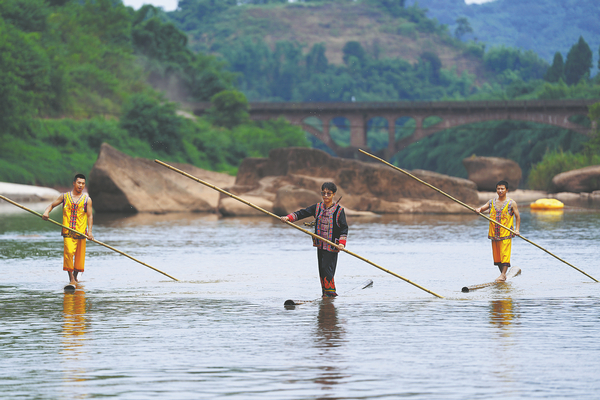

"All the movements that are simple to perform on the shore, such as a forward stroke, a backward stroke, turning around, supporting the pole and manipulating it, place a high demand on physical strength, endurance and balance when done on the water," he says.
Over time, Peng became highly skilled and was later designated as an inheritor of the tradition.
"Developing an interest is very important. Then you need to practice again and again to become skilled," he says.
He was forced to step back in 2021, due to age and physical injuries, leaving the water for the land, and he threw himself into training successors.
"Although I can't do it anymore, I will lead this team well and pass on the legacy of single bamboo drifting to young people," he says.
Over the years, Peng has taught his team a complete set of performances consisting of 20 balancing movements.
As a local intangible cultural heritage performance project, single bamboo drifting is performed for tourists during holidays and at large-scale events, and has been performed around the country on many occasions.
Peng maintains a playful attitude to the practice, saying that this plays an important role in training young people.
"Only those who love it and are willing to experiment can persist and improve their skill," he says.
He doesn't worry about skill levels, but ways to pass on the tradition.
"I'm really used to playing on bamboo in rivers for fun, and this should be encouraged among young people who are training to do it."
There are no fixed schedules and training takes place whenever weather conditions allow, and his team includes a dozen local young people, two of whom are women.